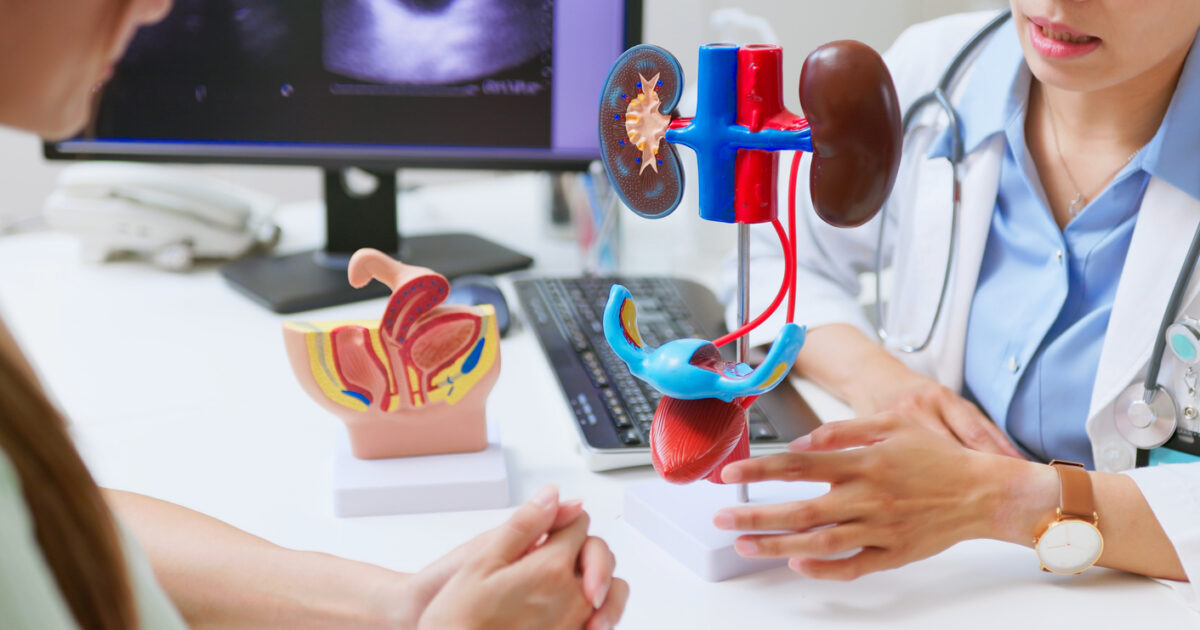What is urinary tract stoning?
Urinary tract stoning is for the formation of stones (stones) in various parts of the urinary tract: kidney, urine, bladder or urethra. The stones are formed by the sedimentation of salts and metals contained in the urine and can cause pain, obstruction or urinary tract infections.
What are the most common symptoms of lithiasis?
Basic symptoms include:
- Intense pain in the middle or side (kidney colic)
- Hematuria (blood in the urine)
- Frequency or burning during urination
- Nausea or vomiting
- Fever (when coexisting infection)
What are the causes of stones?
The causes are multifactorial and include:
- Reduced fluid intake
- Diet rich in animal protein, sodium or oxalates
- Heredity
- Diseases such as hyperparathyroidism or urinary tract infections
- Anatomical abnormalities of urinary tract
How is the diagnosis being made?
The diagnosis is based on:
- Clinical evaluation
- Imaging exams such as ultrasound, x -ray and computed tomography
- Urine and blood analysis
- Subsequent chemical analysis of stones
What are the basic preventive measures?
- Adequate fluid intake (at least 2-2.5 liters daily).
- Diet low in salt and animal fats.
- Limiting foods with high oxalates content (eg spinach, chocolate, nuts).
- In special cases, medication.
What are modern treatment methods?
The choice of method depends on the size, position and composition of the stone. The most up -to -date techniques include:
- RIRS (Endoscopic nephrolithotripsy):
RIRS is a minimally invasive technique in which flexible digital urethroscope is used to endoscopic access of the ureter and kidney through the normal pathway (urethra -plaster), without the need for incision. Modern digital (digital) technology with microcamera and laser relieves the patient immediately, painlessly and bloodless from kidney lithia.
The digital microcamera, mounted on the top of the urethroscope, provides a high definition image and analysis of the internal anatomical structures of the kidney and ureter, allowing accurate identification and estimation of the stones. Laser use offers a fragmentation of stones with speed and efficiency, regardless of cruelty and composition.
The tool is extremely thin (about 2 mm in diameter), with revolutionary design (remote control, flexible up to 270 °), which allows for comfortable promotion of the tool in all areas of the kidney without injuries. In addition, through the work channel and the use of auxiliary tools, all residual lithic comparisons are achieved.
With the flexible digital urethroscope, the patient is permanently relieved of the problem of stones, with minimal postoperative pain, rapid recovery and almost zero kidney injury and urinary tract.
- Mini–PCNLL (Mini– Transdermal nephrolithotripsy):
It is a transdermal access to the kidney through a smaller channel than the classic PCNL, allowing the removal or fragmentation of larger stones with less trauma in the kidney tissues. It has a high success rate, fewer complications and shorter recovery.
- ECIRS (Combined Endoscopic – Transdermal Surgery):
ECIRS combines the advantages of RIRS (endoscopic lithotrrysia and transdermal nephrithotripsy (mini-PCNL) in the same procedure. It is performed simultaneously with both diuretic/endoscopic and transdermal access, providing excellent access and full access to lithias as it increases the rate of complete removal of stones in a single session.
What is post -operative care?
Depending on the method applied, the patient may leave the hospital the same or the next day. A sufficient hydration is recommended, avoiding intense physical activity for a few days.
What should I know about recurrence of stones?
Stones have a high recurrence rate if the causes are not treated. Therefore, long -term monitoring and personalized prevention by a specialized urologist is considered significant.

Writes Achilles PloumidisMD, BSC, MSc, PhD, Febu, Surgeon – Urologist – Andrologist, Scientific Associate Robotics center & Laparoscopic Urological Surgery – Andrology, Athens Medical Center
Read more articles on issues related to your health, here
